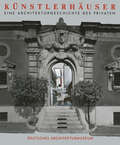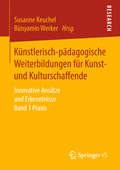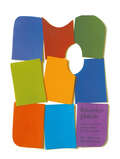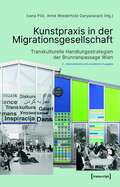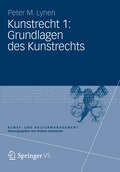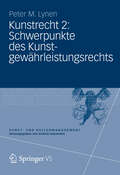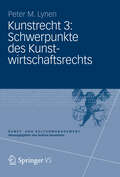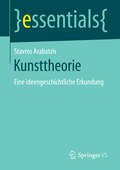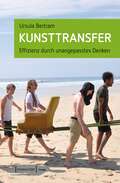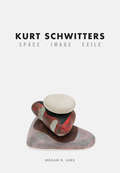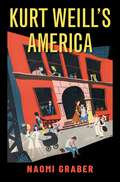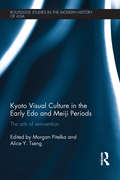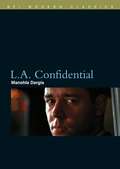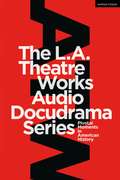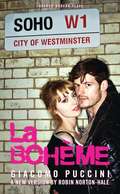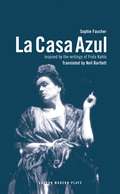- Table View
- List View
Künstlerhäuser: Eine Architekturgeschichte des Privaten
by Hans-Peter Schwarzseape locus ingenio stimolos admovet. Petrarca Der Genius Loci, jene in den letzten Jahren durch Architekturkritik und Architekturtheorie so euphemistisch beschriebene "Besonderheit des Ortes", aus dessen Charakteristik eine sprachlos gewordene Architektur sich die Riickgewinnung verlorengegangener Anmutungsqualitaten er hofft, ist nirgendwo so deutlich spiirbar wie dort, wo durch gesellschaft liche Konvention geadelte Genies ihr kiinstlerisches, literarisches oder musikalisches Tagwerk verrichteten. Das "Vittoriale" Gabriele D' Annunzios ist so ein Wallfahrtsort fiir die Nachgeborenen, oder auch Richard Wagners "Wahnfried" und die Goethe-Hauser in Weimar oder Frankfurt, wobei es niemanden anficht, daB der hier besonders verehrte Olympier "sein" Geburtshaus erst im reifen Mannesalter und allenfalls besuchsweise kennengelernt haben diirfte. Aber die Authentizitat zu hinterfragen, eriibrigt sich fiir den Kultur touristen. Ihm geniigt es, topographische Fixpunkte zu haben, an denen das Stigma des Genialen zumindest in der Imagination wiederentdeckt werden kann. Kiinstlerhauser blieben zumeist Domane romantischer oder lokalpatriotischer Freizeitforscher, denen es weniger darauf an kam, das historisch exakte als das jeweils zeitgenossisch vermittelte Bild yom Kiinstler zu rekonstruieren. Dabei ist eine historische Auseinandersetzung mit den Hausern, die Kiinstler und Architekten fiir sich selbst entworfen und gebaut haben, mit deren Hilfe sie sich in der Gesellschaft eingerichtet oder von ihr abgegrenzt haben, gleich in mehrfacher Hinsicht von Bedeutung. Zum einen konnen wir davon ausgehen, daB gerade die professionellen "Astheten" bei der Einrichtung ihrer unmittelbaren Umgebung beson ders genau und besonders intensiv die Mittel benutzt haben, die Archi tektur, Skulptur und Malerei entwickelt haben, urn Ideen auszudriicken, urn aussagekraftig zu werden, urn gesellschaftliche Anspriiche zu stellen.
Künstlerisch-pädagogische Weiterbildungen für Kunst- und Kulturschaffende: Innovative Ansätze und Erkenntnisse Band 1 Praxis
by Susanne Keuchel Bünyamin WerkerDer vorliegende Sammelband berichtet von konzeptionellen Ansätzen entwickelter Weiterbildungen für Kunst- und Kulturschaffende. Die Beiträge machen deutlich, dass neben der Vermittlung von methodischen Kenntnissen und theoretischen Grundlagen der Kulturellen Bildung auch die Entwicklung einer pädagogischen Haltung einen Ansatzpunkt bildet, um das neu angeeignete Handlungsrepertoire für die Gestaltung pädagogischer Beziehungen anzuwenden. Der Band bietet die Gelegenheit, sich einen Überblick über unterschiedliche innovative Weiterbildungskonzepte in der Kulturellen Bildung zu verschaffen. Ausführlich diskutieren die Beiträge die konkreten Herausforderungen, die mit der Umsetzung solcher Weiterbildungskonzepte verbunden sind.
Künstlerische Verfahren des Films aus psychologischer Sicht: Zum Wirkungspotenzial des Spielfilms (Film, Fernsehen, Medienkultur)
by Peter WussGestaltungsweisen des Spielfilms werden danach befragt, welche ästhetische Funktion ihnen im Erlebensprozess des Zuschauers zukommen mag und wie man diese aus der Perspektive der Psychologie objektivierbar machen kann.Künstlerische Verfahren mit ihren differenzierten gestalterischen Lösungen im Bereich des Erzählens, der Konfliktdarstellung, Kameraführung und Montage, doch auch im Hinblick auf Medienspezifik, Stil und Genre, erfahren hierbei eine psychologische Interpretation, was zu Hypothesen hinführt, die eine empirische Erforschung der kognitiven, emotiven und imaginativen Wirkungsdimension des Films gestatten. Da bei dieser transdisziplinären Untersuchung, die sich explizit dem künstlerischen Ausdruckspotenzial des Mediums stellt, stets von einer Betrachtung konkreter Werke ausgegangen wird, ergeben sich für den Filminteressierten neben psychologisch fundierten Erklärungen zur Funktion bewährter Darstellungsweisen zahlreiche Einblicke in die Wirkungsstrategien innovativer Ausdrucksformen, die sich bisher der Analyse entzogen. Besonders gilt dies für künstlerische Verfahren, die seit Anbruch der Kino-Moderne vom europäischen Autorenfilm zur Anwendung gebracht werden und wichtige Erlebnisgehalte unterhalb der Bewusstheitsschwelle vermitteln bzw. Emotionen und Vorstellungen des Publikums auf neuartige Weise beeinflussen.
Künstlerplakate: Frankreich/USA Zweite Hälfte 20. Jahrhundert (Industrial Design - Graphic Design)
by WICHMANN HUFNAGLKunstpraxis in der Migrationsgesellschaft: Transkulturelle Handlungsstrategien der Brunnenpassage Wien (Image #188)
by Ivana Pilic Anne Wiederhold-DaryanavardDer etablierte Kulturbereich steht vor einem Paradigmenwechsel. Im Zentrum steht der Anspruch, der Diversität der Bevölkerung gerecht zu werden. Das Handbuch eröffnet Strategien, wie diskriminierungskritische Kunstpraxen und das Erreichen von neuen Dialoggruppen umsetzbar sind. Erfolge in Partnerschaften mit ungleichen Kulturinstitutionen werden analysiert, anhand von elf dokumentierten Produktionen werden konkrete Handlungsstrategien aufgezeigt. Ausgangspunkt sind die Erkenntnisse aus der künstlerischen Praxis in der 2007 gegründeten Wiener Brunnenpassage. Das Nachschlagewerk setzt praxisrelevante Impulse für Kulturschaffende, Künstler*innen und Kulturpolitik. Mit einem Vorwort des Staatssekretariat Kultur Österreich und einem Nachwort von Tania Bruguera.
Kunstrecht 1: Grundlagen des Kunstrechts (Kunst- und Kulturmanagement)
by Peter M. LynenDas Recht der Kunst und Kultur aller Sparten hat in den letzten Jahren an Umfang, Bedeutung und Vielfalt gewonnen. Dem entspricht die Zunahme kunstrechtlicher Publikationen. Es fehlte aber bislang eine umfassende Gesamtdarstellung, die in Form eines Lehrbuchs Wege durch das „Labyrinth des Kunstrechts“ aufzeigt und in konziser Beschreibung dem – auch nicht juristisch ausgebildeten – Leser hilft, diese selber gehen zu können. Im ersten Band dieses Lehrbuchs wird auf grundlegende Weichenstellungen eingegangen. Diese betreffen einerseits das Verständnis wesentlicher rechtlicher Kategorien, anderseits die Darstellung der „Doppelnatur“ von Kunst als Kulturgut und als Ware. Die politische, gesellschaftliche und wirtschaftliche Praxis widmet sich beidem mit unterschiedlichen Systemen der kulturellen Förderung und des Handels mit Kulturgütern. Das Recht behandelt dementsprechend sowohl gewährleistende und garantierende als auch wirtschafts- und handelsbezogene Gestaltungsmöglichkeiten. Aufgaben und Funktionen der öffentlichen Hand und diejenigen der Kulturwirtschaft werden in diesem Band aufgezeigt und gegenüber gestellt. Rechtliche Kunstdefinitionen, die Kunstfreiheit und die Handlungsformen im Kunstrecht werden erläutert.
Kunstrecht 2: Schwerpunkte des Kunstgewährleistungsrechts (Kunst- und Kulturmanagement)
by Peter M. LynenDas Recht der Kunst und Kultur aller Sparten hat in den letzten Jahren an Umfang, Bedeutung und Vielfalt gewonnen. Dem entspricht die Zunahme kunstrechtlicher Publikationen. Es fehlte aber bislang eine umfassende Gesamtdarstellung, die in Form eines Lehrbuchs Wege durch das „Labyrinth des Kunstrechts“ aufzeigt und in konziser Beschreibung dem - auch nicht juristisch ausgebildeten - Leser hilft, diese selber gehen zu können. Im zweiten Band dieses Lehrbuchs stehen die öffentliche Hand und staatliche Gestaltungsmöglichkeiten im Fokus der Darstellung. Der hier gebrauchte Begriff „Kunstgewährleistungsrecht“ bezieht sich auf das „Gewährenlassen“ im Sinne staatlicher Garantien und Rahmenbedingungen und das „Gewähren“ im Sinne der Förderung von Kunst und Kultur durch öffentliche Instanzen aller Ebenen (internationale Institutionen, Bund, Länder, Gemeinden). Dies schließt den Kulturgüterschutz als staatliche Aufgabe ein. Im Bezug auf die Künstler geht es um institutionelle, projektbezogene und persönliche Förderungen sowie um Absicherungen künstlersozialversicherungsrechtlicher Art. Weitere Kapitel dieses Bandes betreffen das Steuerrecht und das Strafrecht in Bezug auf Kunst und Künstler.
Kunstrecht 3: Schwerpunkte des Kunstwirtschaftsrechts (Kunst- und Kulturmanagement)
by Peter M. LynenIm dritten Band dieses Lehrbuchs stehen die Akteure marktbezogenen Verhaltens im Mittelpunkt. In diesem Zusammenhang wird auf einen Schwerpunkt des Kunstrechts – das Urheberrecht – besonders eingegangen. Das Kunstvertragsrecht bezieht sich indes nicht nur auf urheberrechtliche Beziehungen, sondern weist eine Fülle bedeutsamer Fallgestaltungen auf. Denen wird vertieft nachgegangen, wobei auch das Recht künstlerischer Veranstaltungen aller Sparten behandelt wird. Insgesamt geht es zunächst um die „positive und zukunftsgerichtete“ Gestaltung solcher Verträge. Sodann ist zu erläutern, was rechtlich gilt, „wenn etwas passiert“. Dabei geht es um Fragen der Verantwortung, der Haftung, des Schadensersatzes und der Versicherung von Kunst. Das Werk abschließend wird das Internationale Privatrecht in Bezug auf Kunst kurz vorgestellt.
Kunsttheorie: Eine ideengeschichtliche Erkundung (essentials)
by Stavros ArabatzisDieses essential bietet eine ideengeschichtliche Erkundung des modernen Begriffs von Kunst. Es leistet eine theoretische Unterscheidung zwischen dem alten und neuen Kunstbegriff („Kultwert“ und „Ausstellungswert“) und zeigt zugleich ihre beider Ununterscheidbarkeit im neuen Kultgegenstand der interaktiv-vernetzten Kultur. Es schlägt Positions- und Kursbestimmungen für eine zukünftige Kunst vor, die den imperativen Mächten nicht mehr gehorcht.
Kunsttransfer: Effizienz durch unangepasstes Denken (Image #114)
by Ursula BertramCreativity is not a prisoner of Art! Unangepasstes, non-lineares und normfreies Denken und Handeln hat schon immer zu großen künstlerischen Werken, bahnbrechenden Erfindungen und zukunftsweisenden Sichtweisen geführt. Doch wie kommt dieses kostbare Gut in unsere berufliche Alltagswelt, um dabei zu helfen, die sozialen, ökologischen und ökonomischen Herausforderungen zu bewältigen? Es handelt sich um die Synergie des logisch begründbaren Wissens und der Fähigkeit des Navigierens im offenen System. Ursula Bertram hat Tausende von künstlerischen Prozessen begleitet und entwickelt. Sie beobachtete dabei die Strategien und Prinzipien von Künstlern, Theaterregisseuren, Musikern und Querdenkern, verglich sie mit den Erzählungen von Physikern, Mathematikern, Managern und Wissenschaftlern. Durch den Austausch und die Erprobung künstlerischen Denkens in außerkünstlerischen Feldern, so zeigt sie, entsteht ein Muster, genannt Kunsttransfer, das sich als äußerst effizient erweist.
Kurt Schwitters: Space, Image, Exile
by Megan R. LukeGerman artist Kurt Schwitters (1887–1948) is best known for his pioneering work in fusing collage and abstraction, the two most transformative innovations of twentieth-century art. Considered the father of installation art, Schwitters was also a theorist, a Dadaist, and a writer whose influence extends from Robert Rauschenberg and Eva Hesse to Thomas Hirschhorn. But while his early experiments in collage and installation from the interwar period have garnered much critical acclaim, his later work has generally been ignored. In the first book to fill this gap, Megan R. Luke tells the fascinating, even moving story of the work produced by the aging, isolated artist under the Nazi regime and during his years in exile. Combining new biographical material with archival research, Luke surveys Schwitters’s experiments in shaping space and the development of his Merzbau, describing his haphazard studios in Scandinavia and the United Kingdom and the smaller, quieter pieces he created there. She makes a case for the enormous relevance of Schwitters’s aesthetic concerns to contemporary artists, arguing that his later work provides a guide to new narratives about modernism in the visual arts. These pieces, she shows, were born of artistic exchange and shaped by his rootless life after exile, and they offer a new way of thinking about the history of art that privileges itinerancy over identity and the critical power of humorous inversion over unambiguous communication. Packed with images, Kurt Schwitters completes the narrative of an artist who remains a considerable force today.
Kurt Schwitters: Space, Image, Exile
by Megan R. LukeGerman artist Kurt Schwitters (1887–1948) is best known for his pioneering work in fusing collage and abstraction, the two most transformative innovations of twentieth-century art. Considered the father of installation art, Schwitters was also a theorist, a Dadaist, and a writer whose influence extends from Robert Rauschenberg and Eva Hesse to Thomas Hirschhorn. But while his early experiments in collage and installation from the interwar period have garnered much critical acclaim, his later work has generally been ignored. In the first book to fill this gap, Megan R. Luke tells the fascinating, even moving story of the work produced by the aging, isolated artist under the Nazi regime and during his years in exile. Combining new biographical material with archival research, Luke surveys Schwitters’s experiments in shaping space and the development of his Merzbau, describing his haphazard studios in Scandinavia and the United Kingdom and the smaller, quieter pieces he created there. She makes a case for the enormous relevance of Schwitters’s aesthetic concerns to contemporary artists, arguing that his later work provides a guide to new narratives about modernism in the visual arts. These pieces, she shows, were born of artistic exchange and shaped by his rootless life after exile, and they offer a new way of thinking about the history of art that privileges itinerancy over identity and the critical power of humorous inversion over unambiguous communication. Packed with images, Kurt Schwitters completes the narrative of an artist who remains a considerable force today.
Kurt Schwitters: Space, Image, Exile
by Megan R. LukeGerman artist Kurt Schwitters (1887–1948) is best known for his pioneering work in fusing collage and abstraction, the two most transformative innovations of twentieth-century art. Considered the father of installation art, Schwitters was also a theorist, a Dadaist, and a writer whose influence extends from Robert Rauschenberg and Eva Hesse to Thomas Hirschhorn. But while his early experiments in collage and installation from the interwar period have garnered much critical acclaim, his later work has generally been ignored. In the first book to fill this gap, Megan R. Luke tells the fascinating, even moving story of the work produced by the aging, isolated artist under the Nazi regime and during his years in exile. Combining new biographical material with archival research, Luke surveys Schwitters’s experiments in shaping space and the development of his Merzbau, describing his haphazard studios in Scandinavia and the United Kingdom and the smaller, quieter pieces he created there. She makes a case for the enormous relevance of Schwitters’s aesthetic concerns to contemporary artists, arguing that his later work provides a guide to new narratives about modernism in the visual arts. These pieces, she shows, were born of artistic exchange and shaped by his rootless life after exile, and they offer a new way of thinking about the history of art that privileges itinerancy over identity and the critical power of humorous inversion over unambiguous communication. Packed with images, Kurt Schwitters completes the narrative of an artist who remains a considerable force today.
Kurt Schwitters: Space, Image, Exile
by Megan R. LukeGerman artist Kurt Schwitters (1887–1948) is best known for his pioneering work in fusing collage and abstraction, the two most transformative innovations of twentieth-century art. Considered the father of installation art, Schwitters was also a theorist, a Dadaist, and a writer whose influence extends from Robert Rauschenberg and Eva Hesse to Thomas Hirschhorn. But while his early experiments in collage and installation from the interwar period have garnered much critical acclaim, his later work has generally been ignored. In the first book to fill this gap, Megan R. Luke tells the fascinating, even moving story of the work produced by the aging, isolated artist under the Nazi regime and during his years in exile. Combining new biographical material with archival research, Luke surveys Schwitters’s experiments in shaping space and the development of his Merzbau, describing his haphazard studios in Scandinavia and the United Kingdom and the smaller, quieter pieces he created there. She makes a case for the enormous relevance of Schwitters’s aesthetic concerns to contemporary artists, arguing that his later work provides a guide to new narratives about modernism in the visual arts. These pieces, she shows, were born of artistic exchange and shaped by his rootless life after exile, and they offer a new way of thinking about the history of art that privileges itinerancy over identity and the critical power of humorous inversion over unambiguous communication. Packed with images, Kurt Schwitters completes the narrative of an artist who remains a considerable force today.
Kurt Weill's America
by Naomi GraberThroughout his life, German-Jewish composer Kurt Weill was fascinated by the idea of America. His European works depict America as a Capitalist dystopia. But in 1935, it became clear that Europe was no longer safe for Weill, and he set sail for New World, and his engagement with American culture shifted. From that point forward, most of his works concerned the idea of "America," whether celebrating her successes, or critiquing her shortcomings. As an outsider-turned-insider, Weill's insights into American culture were unique. He was keenly attuned to the difficult relationship America had with her immigrants, but was slower to grasp the subtleties of others, particularly those surrounding race relations, even though his works reveal that he was devoted to the idea of racial equality. The book treats Weill as a node in a transnational network of musicians, writers, artists, and other stage professionals, all of whom influenced each other. Weill sought out partners from a range of different sectors, including the Popular Front, spoken drama, and the commercial Broadway stage. His personal papers reveal his attempts to navigate not only the shifting tides of American culture, but the specific demands of his institutional and individual collaborators. In reframing Weill's relationship with immigration and nationality, the book also puts nuance contemporary ideas about the relationships of immigrants to their new homes, moving beyond ideas that such figures must either assimilate and abandon their previous identities, or resist the pull of their new home and stay true to their original culture.
Kurt Weill's America
by Naomi GraberThroughout his life, German-Jewish composer Kurt Weill was fascinated by the idea of America. His European works depict America as a Capitalist dystopia. But in 1935, it became clear that Europe was no longer safe for Weill, and he set sail for New World, and his engagement with American culture shifted. From that point forward, most of his works concerned the idea of "America," whether celebrating her successes, or critiquing her shortcomings. As an outsider-turned-insider, Weill's insights into American culture were unique. He was keenly attuned to the difficult relationship America had with her immigrants, but was slower to grasp the subtleties of others, particularly those surrounding race relations, even though his works reveal that he was devoted to the idea of racial equality. The book treats Weill as a node in a transnational network of musicians, writers, artists, and other stage professionals, all of whom influenced each other. Weill sought out partners from a range of different sectors, including the Popular Front, spoken drama, and the commercial Broadway stage. His personal papers reveal his attempts to navigate not only the shifting tides of American culture, but the specific demands of his institutional and individual collaborators. In reframing Weill's relationship with immigration and nationality, the book also puts nuance contemporary ideas about the relationships of immigrants to their new homes, moving beyond ideas that such figures must either assimilate and abandon their previous identities, or resist the pull of their new home and stay true to their original culture.
Kyoto Visual Culture in the Early Edo and Meiji Periods: The arts of reinvention (Routledge Studies in the Modern History of Asia)
by Morgan Pitelka Alice Y. TsengThe city of Kyoto has undergone radical shifts in its significance as a political and cultural center, as a hub of the national bureaucracy, as a symbolic and religious center, and as a site for the production and display of art. However, the field of Japanese history and culture lacks a book that considers Kyoto on its own terms as a historic city with a changing identity. Examining cultural production in the city of Kyoto in two periods of political transition, this book promises to be a major step forward in advancing our knowledge of Kyoto’s history and culture. Its chapters focus on two periods in Kyoto’s history in which the old capital was politically marginalized: the early Edo period, when the center of power shifted from the old imperial capital to the new warriors’ capital of Edo; and the Meiji period, when the imperial court itself was moved to the new modern center of Tokyo. The contributors argue that in both periods the response of Kyoto elites—emperors, courtiers, tea masters, municipal leaders, monks, and merchants—was artistic production and cultural revival. As an artistic, cultural and historical study of Japan's most important historic city, this book will be invaluable to students and scholars of Japanese history, Asian history, the Edo and Meiji periods, art history, visual culture and cultural history.
Kyoto Visual Culture in the Early Edo and Meiji Periods: The arts of reinvention (Routledge Studies in the Modern History of Asia)
by Morgan Pitelka Alice Y. TsengThe city of Kyoto has undergone radical shifts in its significance as a political and cultural center, as a hub of the national bureaucracy, as a symbolic and religious center, and as a site for the production and display of art. However, the field of Japanese history and culture lacks a book that considers Kyoto on its own terms as a historic city with a changing identity. Examining cultural production in the city of Kyoto in two periods of political transition, this book promises to be a major step forward in advancing our knowledge of Kyoto’s history and culture. Its chapters focus on two periods in Kyoto’s history in which the old capital was politically marginalized: the early Edo period, when the center of power shifted from the old imperial capital to the new warriors’ capital of Edo; and the Meiji period, when the imperial court itself was moved to the new modern center of Tokyo. The contributors argue that in both periods the response of Kyoto elites—emperors, courtiers, tea masters, municipal leaders, monks, and merchants—was artistic production and cultural revival. As an artistic, cultural and historical study of Japan's most important historic city, this book will be invaluable to students and scholars of Japanese history, Asian history, the Edo and Meiji periods, art history, visual culture and cultural history.
L.A. Confidential (BFI Film Classics)
by Manohla DargisL.A. Confidential was released in 1997 to huge critical acclaim and it went on to be nominated for nine Academy Awards. Its reputation has since grown to the point that the film is now widely seen as a key Hollywood movie of the 1990s. But it fared poorly at the box-office, having neither big-name stars nor the sop of a comforting moral universe. With characters so bad they were irresistible, the film harked back to an older, darker Hollywood at a time when audiences would soon be flocking to 'Titanic'. Directed by Curtis Hanson from the best-selling novel by James Ellroy, 'L.A. Confidential' stars Kim Basinger alongside Kevin Spacey, Danny DeVito and, to the surprise of many industry watchers, two then relative unknowns, New Zealander Russell Crowe and Australian Guy Pearce. The film is a consummate thriller which takes in - without once losing sight of the human cost - police corruption, organized crime, the sleaze press, high-class prostitution, murder and the ways movies and life twist together. Manohla Dargis explores the careers of Hanson and Ellroy, based on interviews with both men, to dig deep into the film's obsession with the twinned, equally troubled histories of the Hollywood studio system and the city of Los Angeles. She untangles the paradox of 'L.A. Confidential', a film that paints a jet black, melancholy picture of a city and an industry even as it also testifies to - and exemplifies beautifully - their seductive glamour.
L.A. Confidential (BFI Film Classics)
by Manohla DargisL.A. Confidential was released in 1997 to huge critical acclaim and it went on to be nominated for nine Academy Awards. Its reputation has since grown to the point that the film is now widely seen as a key Hollywood movie of the 1990s. But it fared poorly at the box-office, having neither big-name stars nor the sop of a comforting moral universe. With characters so bad they were irresistible, the film harked back to an older, darker Hollywood at a time when audiences would soon be flocking to 'Titanic'. Directed by Curtis Hanson from the best-selling novel by James Ellroy, 'L.A. Confidential' stars Kim Basinger alongside Kevin Spacey, Danny DeVito and, to the surprise of many industry watchers, two then relative unknowns, New Zealander Russell Crowe and Australian Guy Pearce. The film is a consummate thriller which takes in - without once losing sight of the human cost - police corruption, organized crime, the sleaze press, high-class prostitution, murder and the ways movies and life twist together. Manohla Dargis explores the careers of Hanson and Ellroy, based on interviews with both men, to dig deep into the film's obsession with the twinned, equally troubled histories of the Hollywood studio system and the city of Los Angeles. She untangles the paradox of 'L.A. Confidential', a film that paints a jet black, melancholy picture of a city and an industry even as it also testifies to - and exemplifies beautifully - their seductive glamour.
The L.A. Theatre Works Audio Docudrama Series: Pivotal Moments in American History
by Bloomsbury PublishingA unique play anthology featuring five gripping docudramas originally commissioned by L.A. Theatre Works that each explore pivotal moments in 20th century U.S history.With ensemble casts and innovative staging potential these plays are perfect for theatre companies, schools and educational groups looking to stage familiar historical stories in new and original ways. Each play is accompanied by dramaturgical notes that help contextualize and analyze both the events themselves and the dramatic form in which they are presented.The scripts included are:The Great Tennessee Monkey Trial by Peter GoodchildThe Real Dr. Strangelove by Peter Goodchild RFK: The Journey to Justice by Murray Horwitz and Jonathan EstrinThe Chicago Conspiracy Trial by Peter GoodchildTop Secret: The Battle for the Pentagon Papers by Geoffrey Cowan and Leroy Aarons (Winner of theCorporation for Public Broadcasting Best Live Entertainment Award, 1992)As well as five scripts this anthology includes a foreword by Professor Michael Hackett, professor of directing and theatre history at UCLA School of Theater, Film and Television.
The L.A. Theatre Works Audio Docudrama Series: Pivotal Moments in American History
by Bloomsbury PublishingA unique play anthology featuring five gripping docudramas originally commissioned by L.A. Theatre Works that each explore pivotal moments in 20th century U.S history.With ensemble casts and innovative staging potential these plays are perfect for theatre companies, schools and educational groups looking to stage familiar historical stories in new and original ways. Each play is accompanied by dramaturgical notes that help contextualize and analyze both the events themselves and the dramatic form in which they are presented.The scripts included are:The Great Tennessee Monkey Trial by Peter GoodchildThe Real Dr. Strangelove by Peter Goodchild RFK: The Journey to Justice by Murray Horwitz and Jonathan EstrinThe Chicago Conspiracy Trial by Peter GoodchildTop Secret: The Battle for the Pentagon Papers by Geoffrey Cowan and Leroy Aarons (Winner of theCorporation for Public Broadcasting Best Live Entertainment Award, 1992)As well as five scripts this anthology includes a foreword by Professor Michael Hackett, professor of directing and theatre history at UCLA School of Theater, Film and Television.
La Boheme: Quatre Actes... (Oberon Modern Plays)
by Giacomo Puccini Robin Norton-HaleOperaUpClose’s electric new English translation of La Bohème charts the ups and downs of a group of idealistic graduates as they bicker, party, try to make ends meet and follow their dreams. Having wowed audiences at The Cock Tavern Theatre in Kilburn in a record-breaking, sell-out six-month run, as well as an acclaimed transfer at Soho Theatre, this contemporary re-telling of La Bohème won Best Off-West End Production at the Whatsonstage.com Awards, and the Olivier Award for Best New Opera Production.
La Casa Azul: inspired by the writings of Frida Kahlo (Oberon Modern Plays)
by Neil Bartlett Sophie FaucherI took my tears and turned them into paintings' In the electric calm of a blue-painted room, a dying woman reassembles the images of an extraordinary life. The woman is Mexican painter Frida Kahlo. The life is one of struggle - with love, with the body, with her country, and most of all, with her art.La Casa Azul is a collaboration between Quebeçois playwright Sophie Faucher, who also played Frida Kahlo in this production, and internationally acclaimed director Robert Lepage.
La discreta enamorada / The Cleverest Girl in Madrid: Lope de Vega (Aris & Phillips Hispanic Classics)
This book is a Spanish/English edition of Lope de Vega’s La discreta enamorada. The core of the book consists of two texts: a critical edition of Lope’s play in Spanish and Donald R. Larson’s English translation/adaptation of that work. Common to the two texts are explanatory notes focusing on historical, cultural, and literary references. The Spanish text is further clarified by elucidations of difficult words or passages. The texts are preceded by a substantial introduction (discussing conventions of comedy, the comedia de capa y espada and its variation known as the comedia urbana, the political, social, and economic contexts of early 17th-century Madrid) and are followed by a critical apparatus that lists important variants that may be found in previous editions of Lope’s play.
